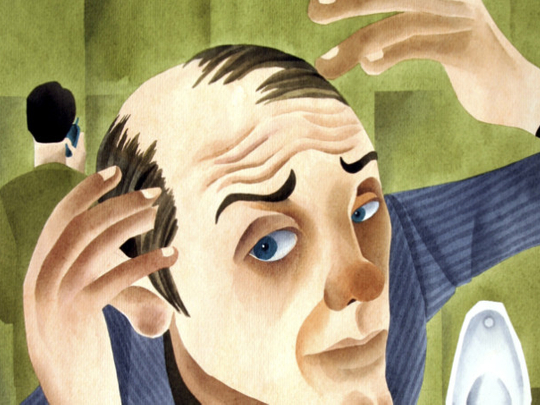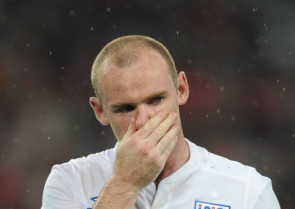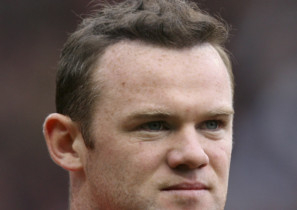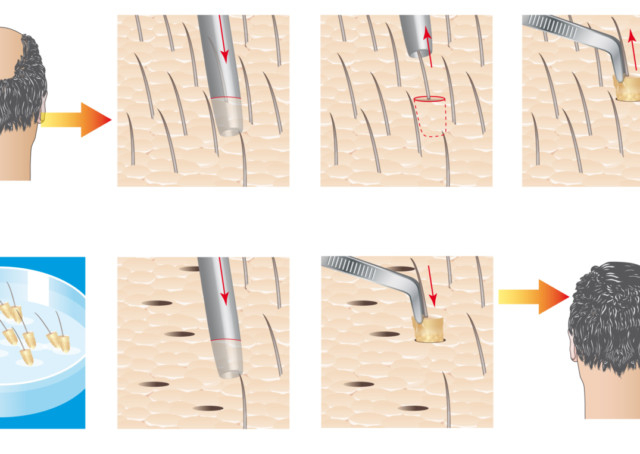
Hair transplant therapy has come a long way in the past decade. And since footballer Wayne Rooney proudly tweeted about his new do, the treatment is no longer the preserve of older men in search of an image overhaul.
Even celebrity chef Gordon Ramsay was snapped leaving a Los Angeles hair clinic looking suspiciously like he’d undergone a similar procedure.
So, why are we losing our locks in the first place? “Male pattern baldness occurs in men whose hair follicles are sensitive to the hormone dihydrotestosterone, or DHT,” reveals Cosmesurge Dubai’s hair-loss expert Dr Hanieh Erdman.
The clinic even offers free phone consultations for anyone looking for more information.
“In women, on the other hand, hair loss usually begins at menopause. When oestrogen levels drop, women’s hair follicles may also become prone to the effects of DHT. Unlike men, the hair-loss pattern in women is marked by thinning throughout the scalp; fully bald spots at the crown are rare.”
Treatment options
Luckily, there’s more than one way to bring your hair back to its former glory. As Dr Sanjay Parashar, CEO and Director of Dubai’s Cocoona Clinic, explains: “We do four different kinds of hair rejuvenation procedures at Cocoona. First is the follicular unit transplantation. The second is a follicular unit strip. The third is a combination of the first and second, where both methods are used for better density. And finally, the fourth is unique to Cocoona and is known as hybrid hair transplantation (HHT). This gives a very natural look and is a celebrity favourite.”
Dr Parashar says his team has carried out more than 5,000 HTT procedures to date.
While most of Dr Parashar’s patients are just regular joes and janes, his team has also treated its fair share of celebrities. “Many of our patients are film stars, TV stars and sports stars. We even treat politicians,” reveals Dr Parashar, before refusing to name them.
Anonymity is, after all, sacred where treatment is concerned.
But Dr Parashar can reveal that he’s noticed a real trend in the type of patient he sees. “The majority of the patients we see are Asian. They might live here but many fly in from India and Pakistan for the procedure. We also treat a lot of Arabs.”
But before you think about booking a consultation, it is worth remembering that the treatment’s not right for everyone. “The best candidates are men or women who have a receding hair line, balding crown, or even significantly thin hair with a visible scalp,” says Dr Parashar.
“The most important criteria is the availability of donor hair at the back of the scalp, in some cases body hair can be used to transfer onto the scalp but it has its own challenges.”
He says: “Some people are unsuitable for the treatment regardless of donor hair availability. For example, people with skin diseases such as alopecia, or those who have very sparse donor hair, a white and fragile thin donor area or some other medical conditions, which we would discuss in an initial consultation.”
What to expect
Dr Parashar explains that all hair transplantation procedures are performed under local anaesthesia, sometimes with oral sedation. “It can take four to six hours, depending upon the number of follicles required.
“First, the hair is harvested from the back of the head either one at a time with an automated machine using a micro punch or as a strip, which is taken from the back of the head. The wound is then stitched up.”
So, what about the recovery time? “Patients can go home the same day and can go back to work the next day,” says Dr Parashar.
“The follicular unit strip technique requires painkillers for a few days and some people prefer to cover the head with a cap for five to six days to disguise the treatment, but that’s all.”















